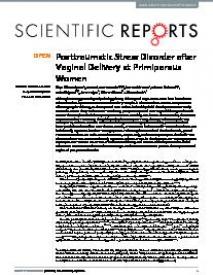Posttraumatic Stress Disorder after Vaginal Delivery at Primiparous Women
Although severe gynaecological pathology during delivery and negative outcome have been shown to be related with posttraumatic stress disorder (PTSD) little is known about traumatic experiences following regular delivery, at the expected time and with a healthy child. The objective of our study was to determine the prevalence of PTSD during postpartum period after vaginal delivery and its risk factors.
The sample included 126 primiparous women. Monthly, for the next three months, the women were assessed for PTSD using the gold standard interview for PTSD, Clinician-Administered PTSD Scale (CAPS). Risk factors were assessed including sociodemographic variables, personal medical history and clinical variables. After the first month, 2.4% women had acute full PTSD and another 9.5% had clinically significant level of PTSD symptoms.
Following the second and the third month, partial PTSD was found in 5.9% and 1.3% of the women, respectively, and none of participants had full PTSD. Obstetrical interventions were the only significant risk factor for the development of PTSD. Symptoms of postpartum PTSD are not rare after a traumatic delivery, and associated with specific obstetrical risk factors. Awareness of these risk factors may stimulate interventions to prevent this important and neglected postpartum disorder.
In: Scientific Reports, ISSN 2045-2322 | 6 | 27554
http://www.ncbi.nlm.nih.gov/pmc/articles/PMC4897652/


